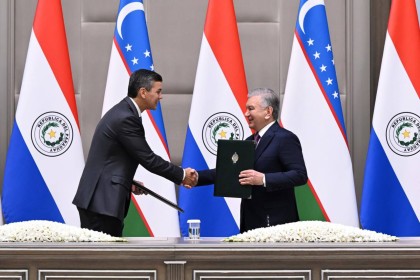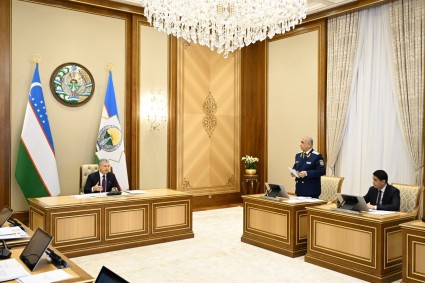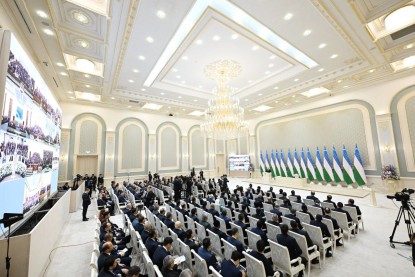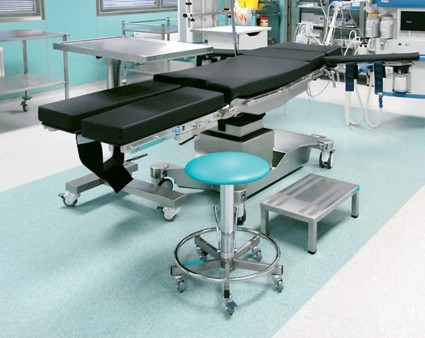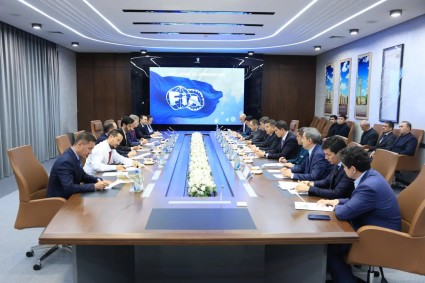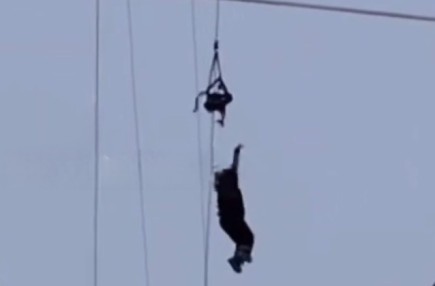In an investigation released this week, Radio Free Europe/Radio Liberty poked into the Uzbek president’s alleged secret resort in the mountains.
What’s obvious, thanks to satellite images, is that there is some sort of compound nestled among the mountains of the southern tip of the Ugam-Chatkal State Biosphere Reserve in Uzbekistan, the RFE/RL said in a story.
This week, RFE/RL’s Uzbek Service released a series of reports stemming from its investigation into a compound along the Shovvozsoy river, which was allegedly built for the use of Uzbek President Shavkat Mirziyoyev. The report suggests that construction on the project was begun in February 2017, shortly after Mirziyoyev officially assumed the presidency, and was completed by the end of 2018. Yet reporters were unable to find a single on-the-ground photograph of the facility, and locals report heavy security making approaching the site impossible.
RFE/RL published its batch of reports on February 23 in English. Rather than recount all the details, which you can read for yourself, I want to point out a few revealing highlights and focus on the methods.
Access to satellite imagery has done away with the secrecy of high walls and distant valleys, which once shielded the powerful from scrutiny. Paired with reporting and a little logic, this reality makes denials much more flimsy. When a government denies what a person can see (via Google Maps) for themselves, they serve to erode their own authority.
Uzbekistan Railways, a state-owned company that controls the protected land on which the compound was constructed, released a statement in response to RFE/RL’s investigation, which it referred to obliquely as “unfounded and untrue reports.” The statement says that the area within the national park was transferred to the company in 2010 in order to preserve the ecosystem. Construction, the statement said, took place gradually thereafter on “recreation” facilities and infrastructure necessary for conservation and development. The statement mentions power lines, a highway and a “small reservoir.” The company lists “Shovvozsoy” as among the resorts owned and operated by the railway and stresses that the “resorts and sanatoriums” provide a variety of services — like ecotourism and rehabilitation — to partners and tourists.
That’s all well and good, but a flimsy denial in face of RFE/RL’s reports.
A visit to the coordinates reveals at least two helipads, each conveniently marked, beside what appears to be artful (rather than naturally occurring) landscaping. Several large buildings are clustered along a road, overlooking a reservoir.
If the resort at Shovvozsoy is open to tourists, even just extremely rich ones, where are the pictures? How does one book a vacation there? RFE/RL’s report cites one “Uzbek entrepreneur” who reportedly saw the interior of one of the structures as saying that it was decked out with Italian furniture (and also a curious spike in exports of Italian furniture to Uzbekistan in 2018 as the facility was being finished). Others who allegedly participated in the construction reported having their phones taken before entering the site, which explains why there are no images, but it does not explain the reason for so much secrecy.
The security of the site and the satellite images suggest its no typical sanatorium.
On the security angle, for example, the site sits within one of just six no-fly zones in Uzbekistan. Four of the other registered no-fly zones cover five known presidential residences; the final no-fly zone covers Uzbekistan’s Nuclear Physics Institute. The Shovvozsoy site is located in the mountains between the cities of Angren and Krasnogorsk, but there appears to be little else in the area to justify airspace the restriction. Add to this reports of armed men blocking roads toward the area, telling a curious activist that “our father’s dacha is over there.”
There’s much more to the investigation: locals displaced and affected by the damming of the river required to build the reservoir; the environmental impact of such construction inside what is supposed to be protected land; threatening messages sent to an activist poking around the resort. And there are many unanswered questions, most critically how much did all this cost and why?


